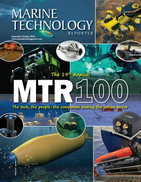NUWC Division Newport Highlights New Navy Projects During Industry Day
Naval Undersea Warfare Center (NUWC) Division Newport representatives gathered with 200 members of the Undersea Technology Innovation Consortium (UTIC) in Middletown on April 26 to discuss upcoming U.S. Navy projects and how industry can support them with rapid development, prototyping and testing of innovative technology.
With more than 260 member organizations, UTIC is the national consortium of defense companies, academic institutions, nonprofit organizations and nontraditional technology companies looking to work with the government to develop innovative undersea and maritime technologies that solve current Navy challenges.
Representing Division Newport, acting Technical Director Chris DelMastro spoke about the value of the Other Transaction Authority (OTA), a legal agreement that enables the government to streamline its efforts in research and development (R&D) and prototype development with consortium members.
“We need your help more than ever,” DelMastro said. “Undersea technology is a challenging area and it’s a growth area. It continues to be productive in this region. There’s a military application and often other applications that may benefit the industrial base as well as the Blue Economy.”
“UTIC is transforming prototype capability,” DelMastro said. “We, as a Navy, need to get faster. This process, through the OTA, helps to truncate the timeline and deliver more rapidly,” DelMastro said.
The program has proven to be a success for the Navy — since its inception in 2018, the OTA has resulted in $455 million in prototyping projects.
Molly Donohue Magee, UTIC’s executive director, highlighted the importance of industry collaboration with the government.
“One benefit of being a UTIC member is the ability for member companies to engage and interact in person with technical leaders in the Navy. By bringing government leaders and industry together, we are fostering meaningful collaboration, and empowering our members to identify technology prototyping solutions to meet the Navy’s needs,” Magee said.
Each Industry Day — two are held throughout the year — provides valuable information on the Navy’s technology needs to give UTIC partners insight to current and future focus areas. One
Navy program in the early stages of development is the next-generation submarine (SSN(X), a new attack submarine platform that will succeed the current Virginia-class submarines.
Capt. Pete Small, project officer for PEO Attack Submarines (PEO SSN), briefed the audience on the nascent program, provided a history on attack submarine development and gave and overview of the Navy’s program.
The development of new attack submarines is driven by the threat environment, Small said. During the Cold War era, several new classes of attack submarines were developed with a focus on Soviet SSNs and SSBNs and anti-submarine warfare. The Virginia-class attack submarine was developed after the end of the Cold War, with an increased focus on power projection ashore and operations in the littorals. Now there has been a substantial change in the threat environment, he said, and the 2018 National Defense Strategy officially marked the return of strategic competition with Russia and China.
The SSN(X) program was started in response to new and challenging threats imposed by this return of strategic competition. Since design and construction of a new submarine can take 15 to 20 years, the first SSN(X) delivery will be nearly 40 years since the lead ship of the Virginia-class was developed — an unprecedented gap. This underscores the scope of the challenge ahead, Small said.
“Given the threats and the timelines to develop a new and more capable submarine, there’s a sense of urgency,” Small said. “New submarine capabilities require advancement of current technologies or development of new technologies that takes time and effort to mature.”
In this environment, one important aspect is the future incorporation of digital engineering.
“The platform may be more capable through digital engineering. But we will have to make the decisions and build policies that enable digital engineering,” Small said.
UTIC members play a large role in supporting current R&D and prototyping and the warfare centers are essential to the success of the SSN(X) program.
“We need robust prototyping, modeling and simulation, testing, and investment in R&D infrastructure in support of new capabilities,” Small said. “By definition SSN(X) must be a more capable submarine. Therefore, we need advanced and new technologies. We rely on the warfare centers to help us design, deliver and integrate those technologies.”


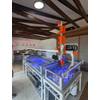
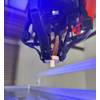

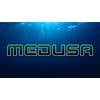

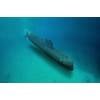








 August 2024
August 2024


